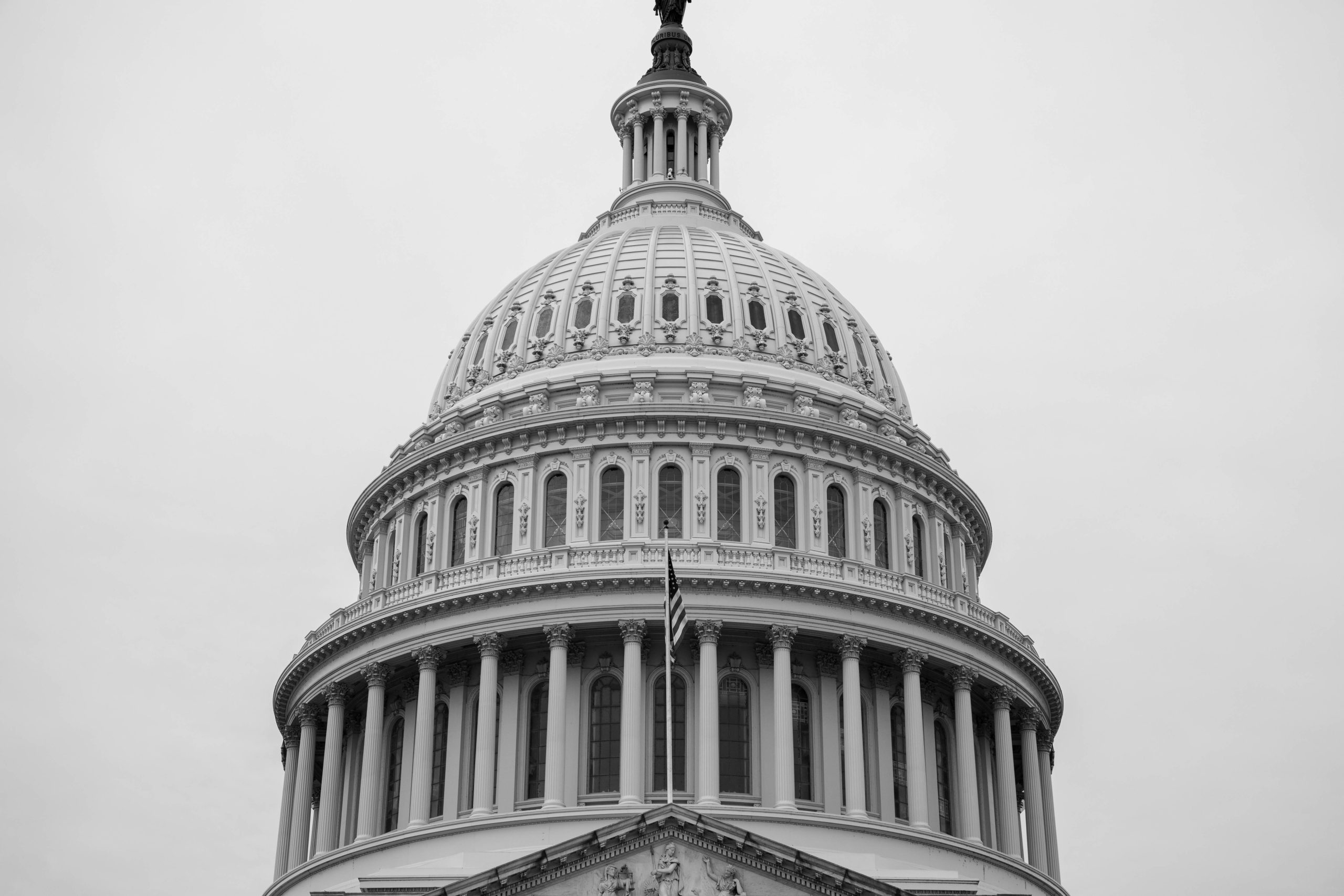It’s Already Been Quite a Year for Trademarks
“The decisions in the Jack Daniel’s and Vans cases have gone far in posing an existential threat to the use of parody in the manufacture of products. Where is the line between parody and spoof?”
It has already been quite a year in the world of U.S. trademark practice. If you manufacture a highly colorful product, are the owner of a well-known trademark, are an AI start-up company or are testing the waters as to whether a certain, unsavory word is protectable, pay attention to developments that have happened in just the first half of 2024.
1. TTAB Trade Dress Trends
Growing up, did you enjoy a bowl of multi-colored Post Fruity Pebbles cereal while watching the milk turn pink, red, purple, yellow, light blue, orange, and green? Post Foods, LLC (“Post”), failed in their attempt to obtain trade dress protection for the seven colors of those crunchy, colorful flakes. In In re Post Foods, LLC, the Trademark Trial and Appeal Board (TTAB) affirmed the refusal of Post’s application to register the color mark shown below, consisting of “the colors of yellow, green, light blue, purple, orange, red and pink applied to the entire surface of crisp cereal morsels,” on the Principal Register for breakfast cereals”:
 In attempting to secure protection, Post failed to correctly define the precise product for which the colors and shapes of the pieces were intended, identifying the product broadly as breakfast cereals instead of crisp rice breakfast cereals (there are too many other colorful cereals on the market for Fruity Pebbles to claim exclusivity as to color . . . remember Trix, Froot Loops and Cap’n Crunch Berries). Thus, Post did not meet the burden required to establish that the colors had achieved requisite acquired distinctiveness.
In attempting to secure protection, Post failed to correctly define the precise product for which the colors and shapes of the pieces were intended, identifying the product broadly as breakfast cereals instead of crisp rice breakfast cereals (there are too many other colorful cereals on the market for Fruity Pebbles to claim exclusivity as to color . . . remember Trix, Froot Loops and Cap’n Crunch Berries). Thus, Post did not meet the burden required to establish that the colors had achieved requisite acquired distinctiveness.
When considering protecting trade dress, applicants should carefully consider the mark description, the aspects of the trade dress to be protected and the precise goods and services to be covered so the Examining Attorney understands the scope of protection sought.
2. Applying Jack Daniels
In the first appellate court opinion on parody following the U.S. Supreme Court’s decision in Jack Daniel’s Properties, Inc. v. VIP Products, the U.S. Court of Appeals for the Second Circuit held that even if an alleged infringer uses a trademark for expressive purposes, First Amendment rights do not apply when a trademark owner’s mark is used as a source identifier for the alleged infringer’s own goods.
In Vans, Inc. v. MSCHF Product Studio, Inc., the Second Circuit focused on MSCHF’s use of Vans’ trademarks on its iconic Old Skool sneaker (shown below), namely, (1) the Vans Side Stripe on the upper part of the shoe; (2) a rubberized sidewall of uniform height around the shoe’s perimeter; (3) a three-tiered or grooved sidewall; (4) a textured toe box: (5) visible stitching; and (6) the placement and proportion of each of these elements in relation to one another.



3. ‘Reckless’ Resales
With the increased popularity of online retailers re-selling luxury brand items, owners of such luxury goods must be extra vigilant in protecting their assets, including trademarks. While the First Sale Doctrine allows for the sale of a pre-owned genuine luxury product, it is still up to resellers to make a good faith effort to authenticate the merchandise they are selling. If they do not, they may end up bleeding themselves dry from their willful blindness—who knew trademark law could sound so dire?
In Chanel, Inc. v. WGACA, LLC, a federal jury in the Southern District of New York awarded Chanel $4 million in statutory damages for claims of trademark infringement, false association, unfair competition, and false advertising against luxury secondhand boutique What Goes Around Comes Around (WGACA) regarding its reselling and marketing of Chanel products. Over a six-year litigation period, WGACA attempted to frame the case as a David and Goliath situation, namely, a small retailer versus a global corporation. However, after a nearly month-long trial, the jury sided with Chanel, determining that WGACA did not verify the legitimacy of its resale items and acted with “reckless disregard” in using Chanel’s trademarks to falsely imply a connection with Chanel in its marketing efforts.
Specifically, Chanel claimed that WGACA used various hashtags containing “Chanel” or “Coco Chanel” on social media including #WGACAChanel, used Chanel branded marketing materials and implied that the companies had a formal business relationship. Chanel said WGACA sold unauthenticated Chanel-branded merchandise obtained from third parties, rather than authenticated products obtained from the fashion giant itself.
Interestingly, two years after the lawsuit was filed, WGACA included a disclaimer on its website that it was not an authorized reseller nor was it affiliated with any of the brands appearing on the site. After the verdict, WGACA put out a statement alleging that it has never sold a non-genuine or counterfeit product and that they stand by their 100% authenticity guarantee. According to WGACA’s CEO “the case is not over.”
This decision not only emphasizes the responsibility of resellers to authenticate merchandise, it also underscores the brand owners’ duty to oversee how their trademarks are being used in secondary market.
4. Registering Open AI
AI is everywhere, and trademark law is no exception. Recently, a California judge granted OpenAI, the ChatGPT maker, a preliminary injunction against Guy Ravine and his company, Open Artificial Intelligence Inc. (collectively “Ravine”), in response to Ravine’s use and attempts to register the trademark “Open AI.” The case is OpenAI Inc. v. Open Artificial Intelligence Inc. et al.
OpenAI claims that it is the senior user of the mark “OpenAI,” and as such would be irreparably harmed by Ravine’s use and registration of the mark “Open AI” in connection with the promotion or sale of any artificial intelligence products or services, or in connection with a website, app or social media accounts. Notably, the only difference between the Parties’ respective marks is a space between “Open” and “AI,” a distinction so minute that even the Parties conceded that the marks are likely to cause confusion. Accordingly, the determining factor hinged on which Party had a valid priority claim.
Ravine was the first to file a trademark application for the “Open AI” mark, which was cited against OpenAI’s later filed application. Despite being the second to file, OpenAI had been using the OpenAI mark in commerce since 2015, and thus, filed a lawsuit against Ravine claiming trademark infringement and seeking a preliminary injunction. U.S. District Judge Yvonne Gonzalez Rogers found that OpenAI is likely to prevail on its infringement claim, stressing that Plaintiff has demonstrated extensive use and recognition of its mark which “quickly became ubiquitous,” and, according to Judge Rogers is “one of the most recognized in the artificial intelligence industry, if not the world.” Such wide recognition is in sharp contrast with Ravine’s allegedly inoperative website and minimal use. Judge Rogers went on to state that the record “paints a troubling picture of defendant Ravine’s representations to the USPTO and this court about the true extent of his use of the disputed mark.” The injunction prohibits Ravine from using the “Open AI” mark for any AI-related products or services until a decision has been reached. The ruling underscores OpenAI’s protectable interest and recognizability in the AI industry, mitigating potential harm to its brand.
It remains to be seen how AI will be treated in future trademark issues and cases. Will AI go the way of INTERNET?
5. FUCT Case Continues
If at first you succeed, maybe you should not try again…at least according to the TTAB.
Erik Brunetti, who previously succeeded in obtaining a registration for the mark FUCT after the U.S. Supreme Court overturned the federal government’s ban on immoral and scandalous trademarks finding it violated the First Amendment, is now facing another trademark battle, this time regarding registration of the F-word.
After the SCOTUS ruling in 2019 allowing registration of FUCT, Brunetti applied to register the F-word, likely assuming that it would be smooth sailing. However, the USPTO refused to register this mark, asserting it is a “widely used commonplace word.”
Brunetti appealed to the TTAB asserting that the “widely used commonplace word” doctrine did not exist until after his successful win at the Supreme Court, and that the USPTO had refused the new application as retaliation. The TTAB was not persuaded, and instead affirmed the refusal. However, the TTAB’s refusal was based on the fact that the F-word failed to function as a trademark, rather than the fact that it is a widely used commonplace word. Brunetti appealed to the U.S. Court of Appeals for the Federal Circuit (In re: Brunetti) maintaining his allegations that the F-word is registrable and the Trademark Office is retaliating against him. As evidence of said retaliation, Brunetti alleges that the “widely used commonplace word” doctrine relied on by the USPTO was created one month after the SCOTUS decision in Matal v. Tam (finding that restrictions on registering disparaging marks were unconstitutional) and the “failure to function” doctrine asserted by the TTAB was created four months after the SCOTUS ruled in his favor in 2019. These doctrines, Brunetti claims, were created solely in an attempt by the Trademark Office “to evade the Supreme Court’s decisions.” Moreover, the artist argued that the USPTO has registered numerous commonplace words such as “LOVE.” Finally, Brunetti said that the when the Supreme Court ruled in his favor in 2019, the Justices understood that the F-word could and likely would be registered one day.
If the F-word is not being used ornamentally, but is being used as a source identifier, it seems, based on the Supreme Court’s prior decisions in Tam and Brunetti, that the Federal Circuit should rule in Brunetti’s favor. Either way, someone is likely to use the F-bomb after the decision is rendered.
The year thus far has proven to be colorful, in more ways than one. Will the second half of the year be filled with equally interesting decisions?
Top image acquired via AdobeStock
All other images taken from court documents.






